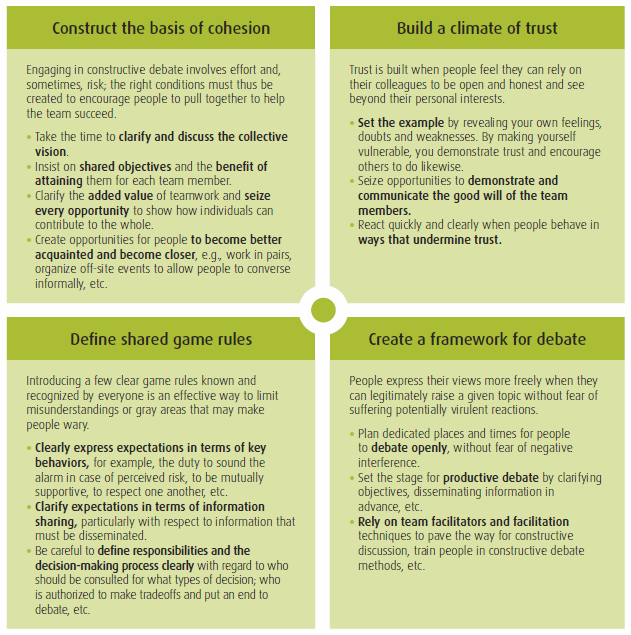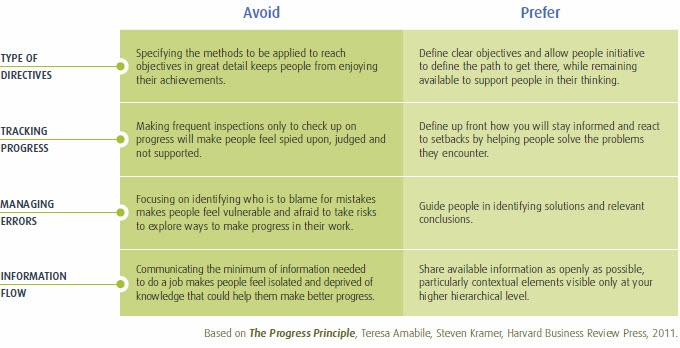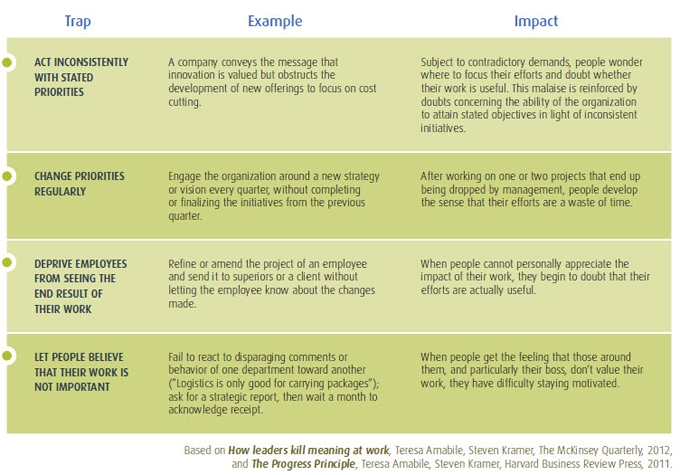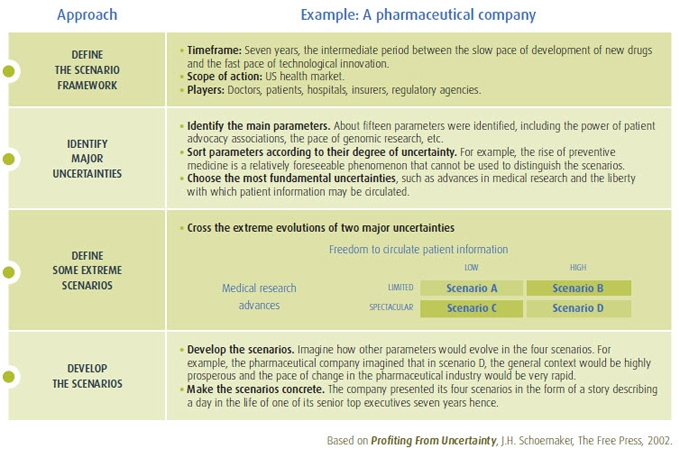Management gemsFind here some gems from our monitoring of the best publications on leadership and management

Taming your vulnerability; How to have the courage to be imperfect
We often say that emotional intelligence is a much better predictive sign of professional success than intellect—and, with it, our capacity to build trusting relationships with our counterparts. Yet, we are quick to move into defensiveness—if only through what is called the negativity bias. Remember this evaluation meeting during which you were lauded for 12 qualities or achievements, and your manager underlined one point for improvement…And what did you keep in mind? Brooding over this imperfection most likely.
Brené Brown studied for 10 years this notion of vulnerability. She schematically identified two categories of persons: those who really believe in their value (and think that they deserve to be appreciated), and those who question their value, and wonder whether they really deserve to be appreciated. The latter find interpersonal relationships more difficult, of course. How can you switch to the first category? The key consists in having the courage to accept being imperfect. And even to transform our vulnerabilities in a distinctive characteristic, if not an asset.
A nice invitation to let go of our utopic quest for perfection.
To watch: The power of vulnerability, Brené Brown, TEDxHouston, TED.com, December 2010.
ShareCreate a climate of constructive debate
Feeling supported by an environment that is focused on the best way to attain objectives is highly simulating. Being able to share thinking with colleagues, capitalize on their ideas, freely share opinions on their work, and openly discuss encountered problems are all opportunities to reinforce the enjoyment felt by employees as true stakeholders in an efficient organization. This, in turn, facilitates the self-gratifying accomplishment of their objectives.
Executives and middle managers alike have considerable influence on creating this mindset.

To learn more :
¬ Stimulate job satisfaction (Manageris’ Synopsis No.212a)
Monitor the progress of work without depriving employees of their autonomy
It is absolutely natural for managers to ensure that people’s work is progressing well. However, the attitude shown by the manager may be stimulating employees' motivation or conversely killing employees’ motivation! In the first instance, supervision is experienced as support in identifying and solving problems. In the second, it is felt to be as an intrusion that dispossesses the employee of his or her responsibilities. Four risks must therefore be carefully avoided to manage the team:

To learn more :
¬ Stimulate job satisfaction (Manageris’ Synopsis No.212a)
Avoid blunders that sap motivation
The main source of motivation at work is the enjoyment people feel when they make progress toward their objectives, provided of course that they value the latter!
This condition is not difficult to fulfill. Indeed, a person need only feel that he or she is making a useful contribution to a relevant goal. But numerous management blunders regularly undermined the sense of accomplishment. Being aware of these pitfalls minimizes the risk of demotivating employees by giving them the feeling that they are not useless.

To learn more :
¬ Stimulate job satisfaction (Manageris’ Synopsis No.212a)
¬ Motivational springboards for your workforce (Manageris’ Synopsis No.156b)
A strategic planning tool: the scenario method
The scenario method does not claim to help predict the future. Rather, the objective is to identify the principal uncertainties that influence market trends in order to prepare effectively for different possibilities. In an increasingly unstable environment, this is a useful complement to the inherently rigid annual budgeting process.

To learn more :
¬ Leader 2.0 (Manageris’ Synopsis No.209a)
¬ Uncertainty and scenarios (Manageris’ Synopsis No.111a)